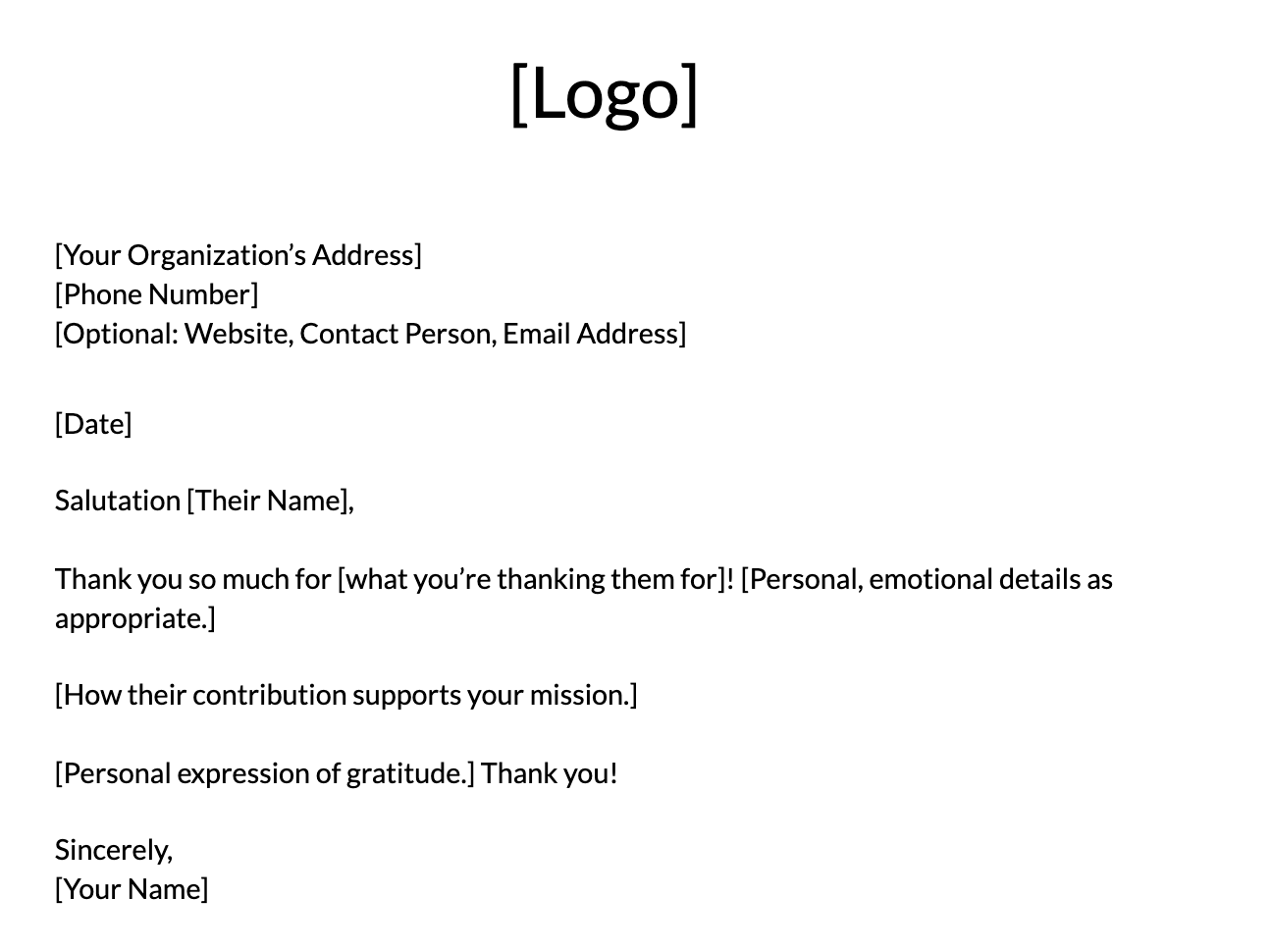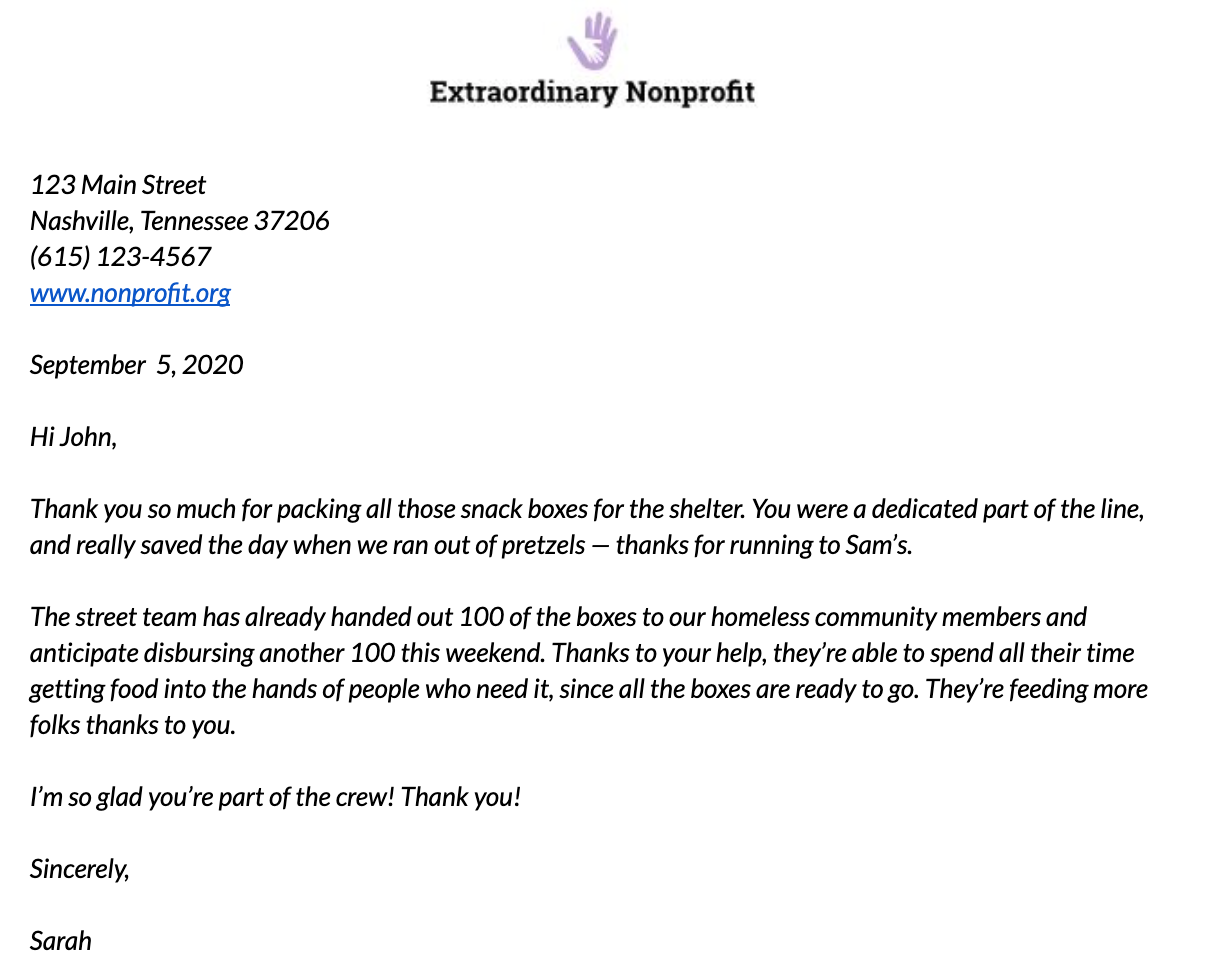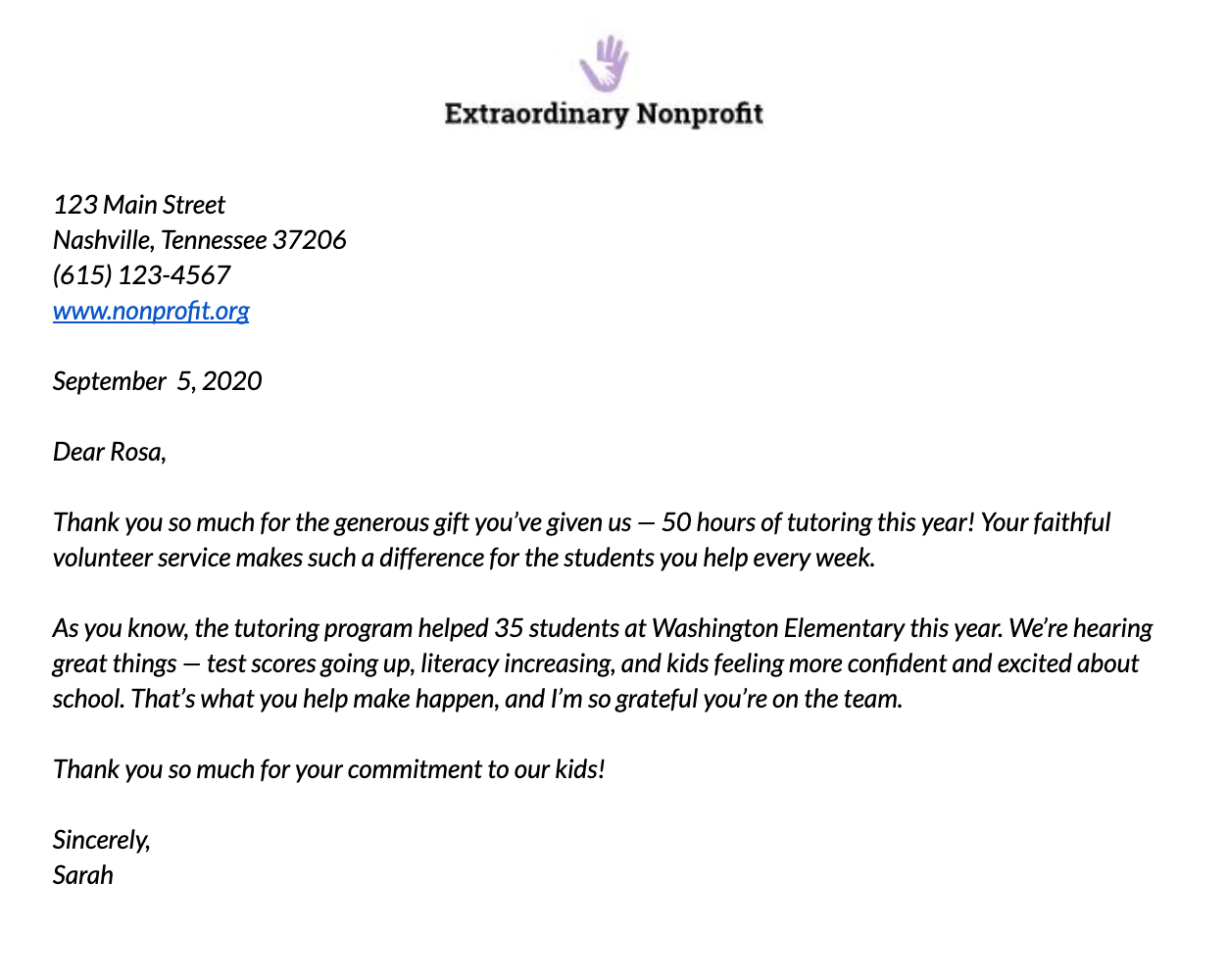

Jo was a volunteer manager at an education nonprofit. To mix things up and get more engaged in her community, she’d started volunteering at a local museum. She’d been giving museum tours for about three months when a letter from the volunteer department arrived.
I’m so glad you’ve joined the volunteer docent program! You always anticipate how to help and get your availability in so early — no surprise that a volunteer manager would turn out to be a truly great volunteer.
Thank you so much for taking that late tour group yesterday. They had missed their reservation and you were under no obligation to stay, but you gave them such a great experience and didn’t rush it at all. They absolutely raved about your tour and were so happy to still get to see everything. You really went above and beyond to make the museum a welcoming place. Thank you.
Hope to see you next week at the meeting!
Reading the letter, Jo had two simultaneous thoughts: “This is really nice.” and “Oh, no.”
She knew good volunteer engagement when she saw it. This little hand-written note made her feel appreciated, proud of herself, and ready to take on a thousand late tours. That’s why when she thought about her own volunteer thank-you letters, she was mortified.
She’d been using the same generic, “thank you for being a volunteer” form letter for years. She sent it out annually throughout National Volunteer Month, and didn’t really think about it any other time… but now, that volunteer thank-you letter seemed dull, impersonal, and lacking real meaning.
Sure, she made sure to express gratitude to her volunteers when she interacted with them, and she put on an annual volunteer appreciation event, but being on the receiving end of a warm, personal letter made her see what she was missing out on. She decided to change her thank-you letter strategy as soon as possible.
Want to step up your own thank-you letter game? Download our volunteer thank-you letter template to get a little help.
Or keep reading to learn just how volunteer thank-you letters can help you out, and what you need to include.
The first reason to send volunteer thank-you letters?
Volunteers deserve them!
They gift your organization their time and talents, which is an important, necessary, and generous contribution. Volunteers could spend their free time doing anything, and they chose to help your organization.
This is especially true during COVID-19. The pandemic has made volunteering more complicated, as programs change, new safety measures must be observed, and going out and doing things has taken on an element of danger. Depending on your mission, you may have volunteers taking on more risk than usual to help out. Or perhaps your volunteers are not able to participate during this time, or have had to radically shift their volunteer responsibilities online. Either way, now, more than ever, it’s important to engage your volunteers.
Letters and other thanking efforts can also help you retain and engage volunteers. Recognition and appreciation are part of any good volunteer management plan — who wants to keep volunteering somewhere where no one appreciates them?
Thank-you letters can be particularly effective because they help build human relationships between the sender and recipient. These personal interactions make a big difference in whether or not a volunteer feels like part of the organization.

Most thank-you letters are nice to receive, but some are more meaningful than others. Jo knew her generic note that said, “Thank you for being a volunteer!” was much better than no thank-you letter at all.
To really make an impact, though, it helps to get specific. Specific observations about what someone has done and how they did it mean more than general warmth. “Thank you for sticking with that wild school group and being so patient when the kids tried to climb the fence. What a day!” or “You’ve personally taken more trash out of the river than anyone, ever,” show your volunteers that you’re really paying attention to them.
Try to find one specific example to reference in your thank-you letter, even if it’s something small. Did someone take on a less desirable volunteer assignment? Has a volunteer been especially flexible during COVID-19? Did they arrive early, stay late, or take on an extra commitment? What about reaching milestones in volunteering, like service anniversaries or goals reached? These are all worthy of noting in a thank-you letter.
Additionally, a letter needs a sender — i.e, a real person. Jo’s existing volunteer thank-you letter was from “all of us” at her organization. She’d originally thought that would make it more impressive, conveying widespread appreciation across the organization. As she thought about it now, though, she realized that she was missing an opportunity to build more personal relationships with volunteers.
Jo decided that she would be the sender of the letter and that while she would be professional, she’d also write in her own voice, in first-person, no longer using an organizational “we.” The difference this one-to-one approach made in her letters was immediate.
A few days after she’d put the first batch of thank-you letters in the mail, Jo was surprised when her phone rang. It was one of her long-term volunteers. “I just wanted to thank you for your lovely note, it made my day!” the volunteer said. “I’ve been having a really hard week, and I was so surprised you noticed my volunteer anniversary.”
Jo had been sending her generic thank-you letter for years, and never heard anything about it. Now, she was getting responses.
Often, nonprofits have volunteer appreciation events as part of their annual calendar. These events are great, but you don’t have to wait for one to thank your volunteers.
If you’re trying to keep and engage your volunteers, which most nonprofits are, you can’t make volunteer appreciation a once-a-year event. It’s simply not enough engagement. Thank-you letters are an inexpensive and meaningful way to keep the appreciation going year-round.
Day-to-day informal recognition can be very powerful. The little things that show you care can have more of a concrete impact on a volunteer experience than the big ceremonies, certificates, or recognition speeches. Your volunteers may like getting a commendation from your town’s mayor, but really feel valued when the organization provides coffee for early morning meetings. A little personal thank-you note may mean just as much as a fancy annual volunteer dinner. A culture of appreciation includes formal and informal volunteer recognition.
At first, Jo was hesitant to add more appreciation into her schedule. She already had a volunteer newsletter, her big appreciation event, and running the operations of the volunteer department on her plate. Throwing another thing into the mix felt overwhelming.
She knew if she was going to add another activity, she needed to make it a small, sustainable habit, rather than a giant letter campaign. So she bought a box of pretty notecards, pulled a list of contacts from her volunteer management software, and committed to sending a single card a day, checking off contacts as she went. As she interacted with volunteers, she started keeping little notes of things to thank them for.
Once Jo had established the habit, she found she could actually write three notes a day without spending too much time on it.
One of the things Jo had found most meaningful in Kim’s thank-you letter was being told how she had made a difference — she’d made the museum a welcoming place. 93% of volunteers do so to make a contribution to the community, so point out how they’re doing just that in your volunteer thank-you letters.
Your volunteers chose your organization because they believe in your mission. Show them how their work connects to making that mission happen.
Are volunteers doing essential mission-related work, like tutoring students, maintaining trails, staffing a resource center, or teaching skills? Or are they taking on necessary tasks to free up other people to pursue the mission, like cleaning out stalls so more kids get riding therapy or answering the phone so caseworkers can spend more time with clients?
Whether they’re directly pursuing the mission, or supporting those who are, they’re making a lot of good work possible. Highlight the connection of the work they’re doing to the change that’s being made.
Six months into her new volunteer thank-you letter effort, Jo couldn’t believe how much of a difference it made to volunteers. She had better, more personal relationships with many of them, and she noticed that her retention numbers seemed to be improving, along with the general mood of the volunteers.
Jo knew how she’d felt when she received a personal volunteer recognition letter, and she found that giving that experience to other people had become one of her favorite parts of her job. While each letter was unique, she settled into a basic template that helped her write quickly while still keeping things personal, specific, and warm.

You can download this volunteer thank-you letter template here, and start building relationships and creating a culture of appreciation at your organization.
And here are two quick examples of how you can personalize this letter and make it your own (they’re also included in the template download!):


We hope this template, examples, and tips will help you create a thank-you letter that will blow your volunteers’ socks off!
Any other volunteer thank-you letter advice you want to share? Let us know in the comments.